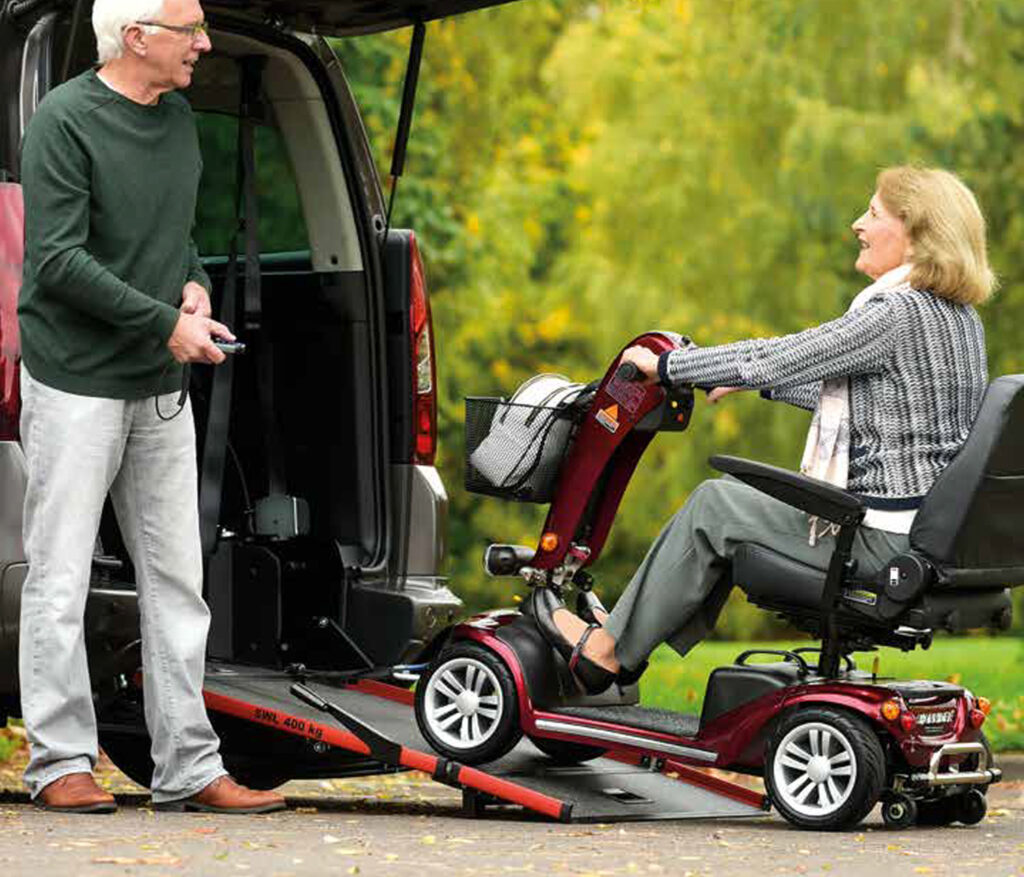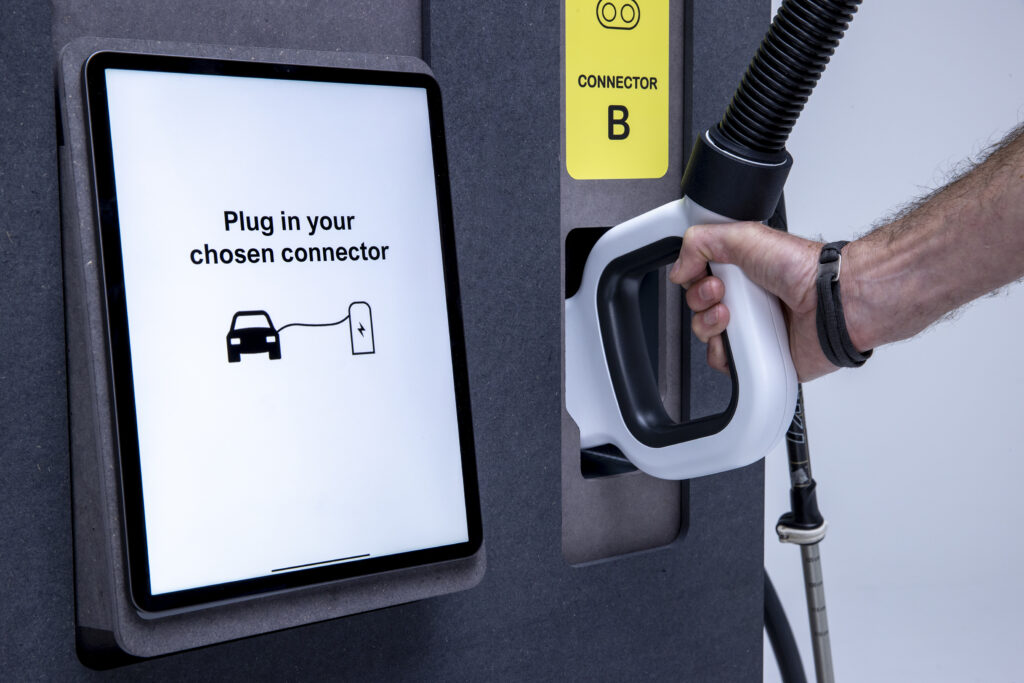Adapted vehicles for disabled people
What are adapted vehicles, and what do they mean for public EV charging?
Adapted vehicles and public charging
Some vehicles, including electric vehicles, are adapted to meet the needs of disabled drivers or passengers, and some of these adaptations can directly or indirectly affect how public charging is used.

Stowage adaptations
These enable mobility aids such as wheelchairs or scooters to be “stowed” in or on a vehicle, for example using a boot hoist that automatically lifts a wheelchair into a car boot. These adaptations are typically electric and must be powered by the vehicle.
Using these adaptations can require extra space behind or next to the vehicle, or need the vehicle to be parked a certain way round. The driver or passenger must be able to wait safely next to or behind the vehicle while the mobility aid is moved in and out of the vehicle.

Access adaptations
These enable a driver or passenger to get in and out of the vehicle. This includes helping them to enter the vehicle while sitting in a wheelchair or scooter (making it a “Wheelchair Accessible Vehicle”, or “WAV”).
Some of this equipment, and the vehicle’s doors, may need to be powered by the vehicle’s battery and may require extra space next to or behind the vehicle.
The doors and the equipment can take a while to move, so the driver or passenger may need to wait next to or behind the vehicle for some time when they are getting in or out of the vehicle. The vehicle may need to be parked in a larger space, or a particular way round, to allow the driver or passenger in and out safely.
Some vehicles with access adaptations can also be significantly larger than other cars or vans, and need to be accommodated when designing public charging infrastructure. Some of these larger vehicles can fit in a standard sized accessible space where the driver and/or passenger can use the available space around the vehicle, but very large vehicles, and those with ramps, can require much more space behind them, both for the ramp and for the person using it to manoeuvre safely away from moving vehicles.

Driving adaptations
These enable a driver to control things like speed, steering and signalling. This can include hand controls instead of using pedals. Driving adaptations do not affect the charging process directly, but a driver who uses driving adaptations may be the person who uses a public charging point and so their needs should be accommodated.
For example, someone using hand controls instead of pedals might have a prosthetic leg and therefore have reduced balance, and someone with limited hand function who has driving adaptations might need charging infrastructure that does not require good strength and dexterity.
To find out more, take a look at Motability’s dedicated page about adaptations (opens in a new window).

Design guidance
Take a look at our suggestions for making public EV charging more accessible



